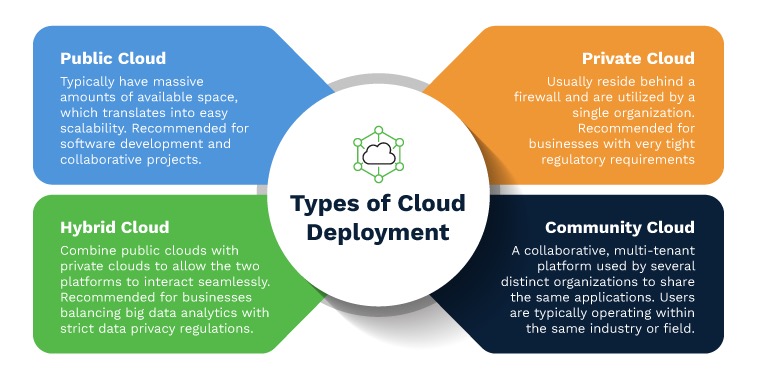“Hey siri, define cloud.”
Pause. Without referring back to the title of this blog, take a moment to sit and ponder. What immediately pops into your mind when reading the statement above. Rightfully so, the image racing through your mind can most likely be depicted by the couple of pictures below.

In this article, we’re going to step into the the world of The Cloud, an invisible mass of opportunity.
Definition
The business and more specifically the tech industry loves to use buzzwords such as the Internet of Things, Big Data, and 5G, all of which are mildly understood. The problem is that for both consumers and even employees, these terms are rather ambiguous and in-depth knowledge on the subject is usually pretty shallow. The cloud powers many of your daily operating platforms, such as Google Drive, Apple ICloud, Netflix, Microsoft OneDrive, and many more. One more example would be Google Photos. To put context behind this, do you remember the days where your IPhone would run out of storage after around 6-12 months? (That number could be even lower for those of you who love taking pictures). The cloud is the reason that you no longer have to worry about such a trivial problem.
Definition: Cloud is a model of computing where servers, networks, storage, development tools, and even applications (apps) are enabled through the internet
Cloud Computing
Now that we have touched on the basics of the cloud, let’s touch on one of the primary offsets of the cloud, cloud computing. To be succinct in IBM’s definition, Cloud computing is on-demand access, via the internet, to computing resources such as, applications, servers, data storage, development tools, networking capabilities that is hosted at a remote data center managed by a cloud services provider (or CSP).
I wanted to focus specifically on cloud computing because I truly believe that every company within the next couple of years will have to utilize cloud computing in order to be successful. Prior to the introduction of cloud computing, companies would have to store all of their data on their own hard drives and servers, a practice which you can imagine is very expensive to maintain. The Cloud allows you to lower IT costs as well as scale your business faster and way more effectively.
The 4 most prominent types of deployment models include the Public, Private, Hybrid, and Multi-Cloud. Additionally, there are 3 main service types, some of which may sound pretty familiar. These service types include SaaS(Software as a Service), IaaS(Infrastructure as a Service), and PaaS.(Platform as a Service)

SaaS – With SaaS, an organization accesses a specific software application hosted on a remote server and managed by a third-party provider. On a subscription basis, the application is accessed through a web browser, reducing the need for on-device software downloads or updates. Popular SaaS products include Salesforce and Workday
IaaS – IaaS provides an organization with the same technologies and capabilities as a traditional data center, including full control over server instances. System administrators within the business are responsible for managing aspects such as databases, applications, runtime, security, etc., while the cloud provider manages the servers, hard drives, networking, storage, etc. This is the simplest option for most business.
PaaS – With PaaS, an organization accesses a pre-defined environment for software development that can be used to build, test, and run applications. This means that developers don’t need to start from scratch when creating apps. PaaS allows the developer to focus on the creative side of software development, as opposed to tedious tasks such as writing extensive code or managing software updates or security patches.
I will put links at the end of the blog, so you all can read a bit more into the models if that is something that you are interested in.

The Future of the Cloud
I stated earlier that I truly believe that it is paramount to utilize the resources that the Cloud provides in order to stay successful in the business world. I believe that the benefits associated with the Cloud will be visible in our society for generations to come. That being said, I have pretty lofty expectations for how the future of the Cloud will look like in years to come. I believe that there will be increased security in the Cloud. This is something that happens with every new technology. As individuals begin to become more familiar and assimilated with the Cloud, other individuals will use it as an opportunity to exploit others, which is why the importance of security is unparalleled . Additionally, I believe that the Cloud will have an even bigger influence in both the Education as well as Healthcare industries, two sectors where storage and records are essential.
Building Knowledge In the Cloud
The Cloud is already a foundational block in our society today. It is essential that as we enter the tech space, but more importantly the workforce, that we are familiar with the Cloud. The goal of this blog post was just exposure, however I did want to touch on ways that you can utilize to expand your knowledge in this area. Linkedin Learning has dozens of courses about Cloud Computing, Edge Computing, Networking, and many more. The courses are around 30 hours and provide you with a certificate at the end as well. Linkedin Learning is also free when you put in your student email. Other certificates that are pretty useful for beginners include the COMPTIA+ Cloud, AWS Certified Solutions Architect, Google Associate Cloud Engineer, and the Azure Fundamentals certificate. These are low-zero cost certificates that you can look into that could potentially give you an early leg-up in your career or even peak your interest into a different career path.

The future is now.